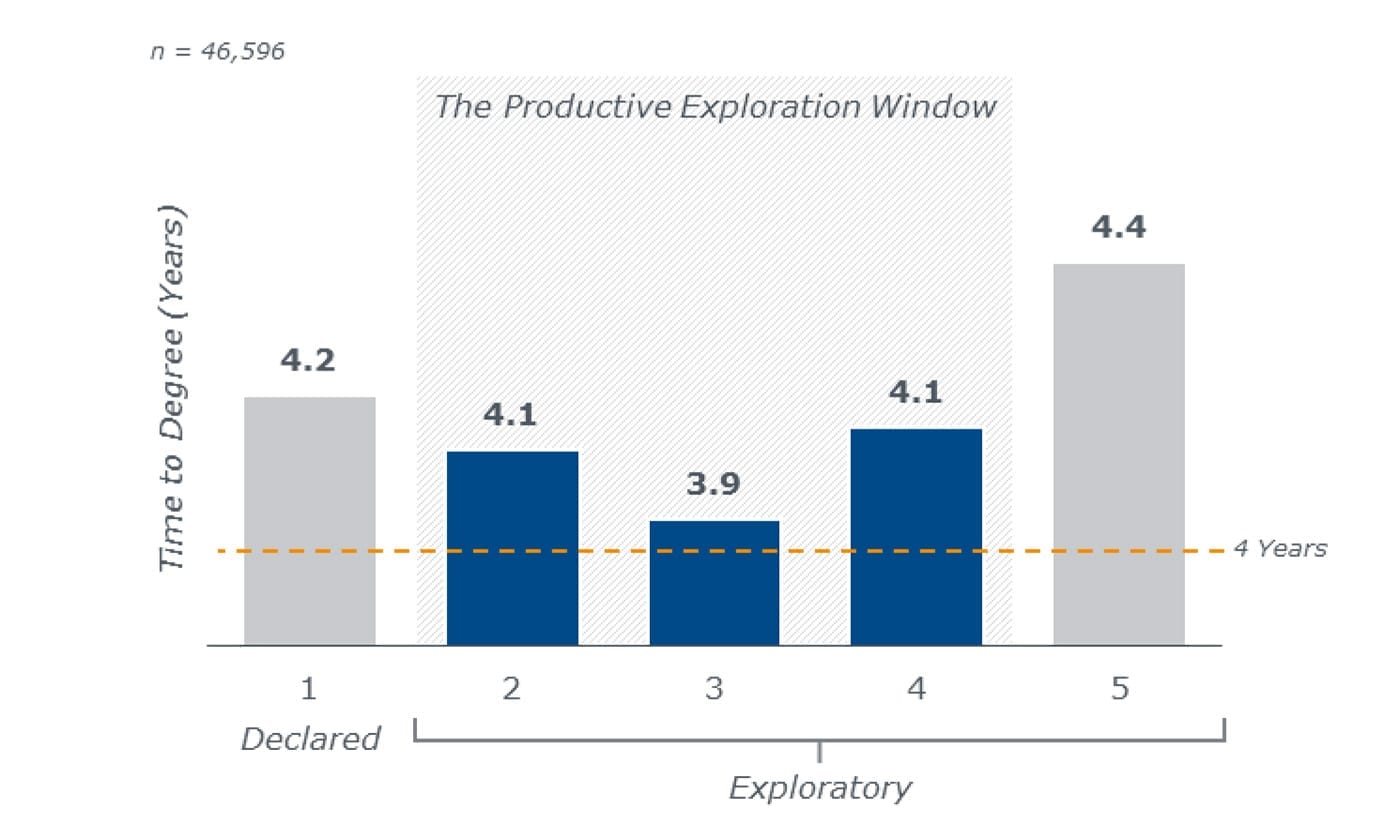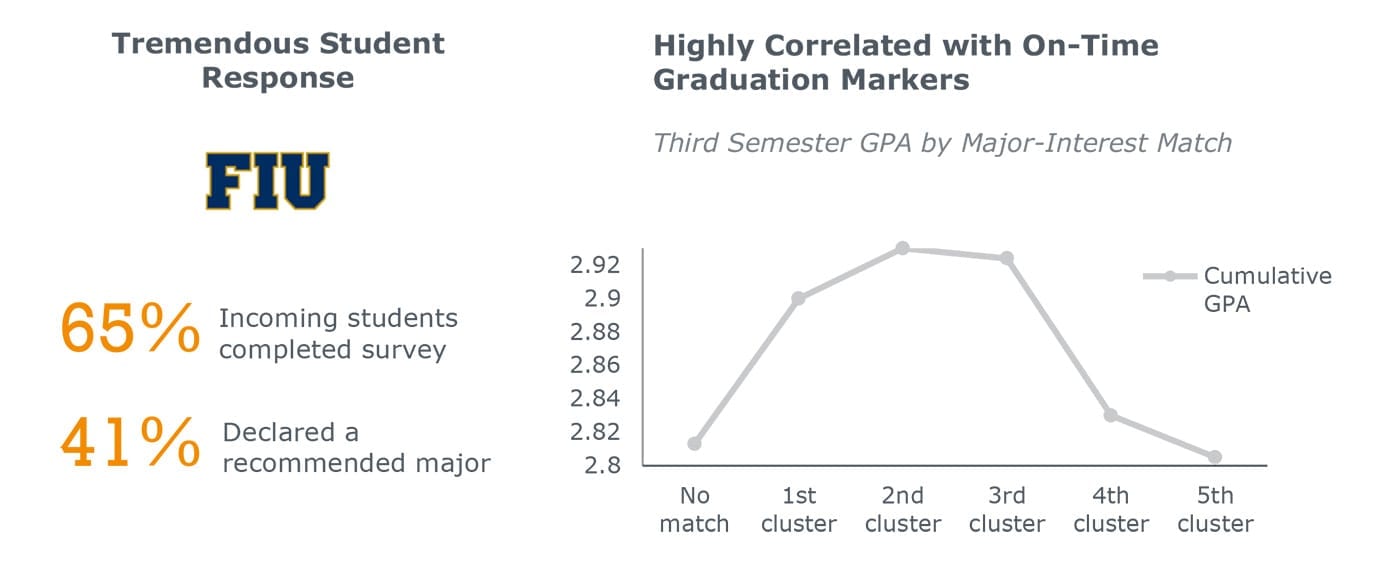The jury is in: Major matters for on-time graduation
When it comes to on-time graduation, it should be no surprise that major fit matters. Education researchers Allen and Robbins (2010) found that students with higher levels of “interest-major congruence”—a measure for how well students’ interests align with their academic (i.e. major) environment—are more likely to graduate in four years.
Greater Interest-Major Congruence Associated with Improved Chances of On-Time Graduation

Determining a best-fit major requires students to choose from hundreds of possible program options, so academic exploration is critical to making an informed major choice. However, unbounded exploration can result in significant delays in degree progress.
EAB’s Student Success Collaborative used data from more than 46,500 graduates to examine the relationship between term of first or last major declaration and time to degree. The research established that there is an optimal period for students to spend exploring before declaring their first major—the “productive exploration window.”
The productive exploration window provides three key lessons:
1. Academic exploration has an expiration date.There is a clear time-to-degree penalty for students who declare their first major after the fifth term of study.
2. It’s better to be right than (too) fast.Surprisingly, declaring a major upon entry was associated with longer time to degree in comparison to students who declared after taking time to explore. This finding may be due to students persisting with poor-fit majors for too long—a not uncommon scenario in nursing and engineering departments.
3. Late major switching impedes timely degree completion.Major switching will not necessarily delay time to degree, unless the last major switch occurs after sophomore year. This tends to add more than six months to time to degree. Notably, 35% of the student sample made their final major declaration past this critical point.
Blog post: What does major switching tell us about student outcomes?
Time to Degree by Term of First Major Declared

Early and proactive major guidance
Too often, students do not conduct thorough research before selecting a major; instead they rely on advice from family and friends and may choose an initial major that doesn’t actually align to their career interests. To help students pinpoint their career interests before they select a program of study, Florida International University (FIU) frontloads career exploration during the application process.
FIU created a four-step process to scale career counseling across its entire applicant pool:
1. Prospective students can take a 10-minute career-matching exercise that asks them about their interests, skills, and ambitions.
2. The survey generates a series of ranked career clusters for the student, with each cluster mapped to a major offered at FIU.
3. Students can click through to explore the majors, the degree requirements, and potential career paths.
4. Advisors at FIU receive the survey results for matriculated students to inform major selection conversations.

Early intervention promotes better major-fit decisions
At FIU, supporting major fit early on has translated into better grades for students who heed the survey results.

In addition, FIU indicates that first-generation students, who often lack the networks that could help guide academic and career planning, find the career exercise and links to majors very helpful in understanding their major options in the context of real career interests.
Related: Help first-generation students navigate the “hidden curriculum”
FIU’s program shows that it is never too early to help students consider career interests and program selection given the impact upon on-time graduation. Moreover, the survey is cost effective and easy for students to participate in as part of the admission process.
More roles for enrollment management in student success
Enrollment management has a unique opportunity to foster collaboration across admissions, advising, and career services to provide students with valuable major and career guidance that can help them stay on track for on-time graduation. To learn more about how enrollment managers can support student retention, see our study Incentivizing Behavioral Change with Aid Dollars. Download the study


